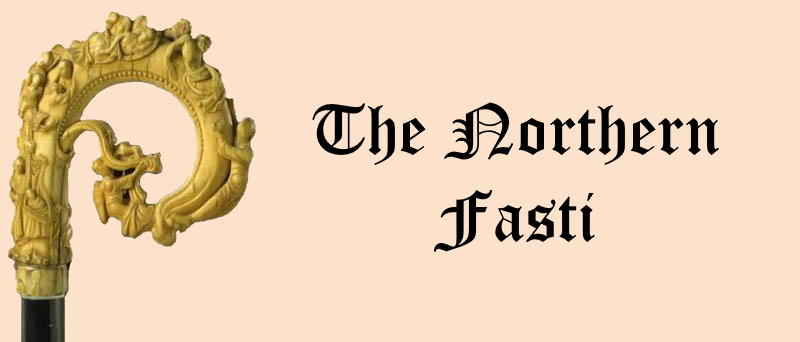Strathspey Deanery
Insh
Parish Church: OS Ref: NGR NH 836054 H.E.S. No: NH80NW 3 Dedication: St. Adamnán of Iona.
Associated Chapels: (none known.)
William Crammond wrote that, "The church of Insh is one of the most 'primitive' in the country, and is well worth a visit."1 Many who have visited since might perhaps reflect that he understated things!
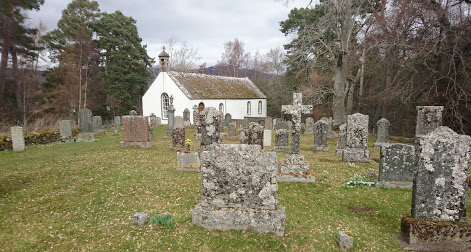
© Geoff White
The Church is situated on the shore of Loch Insh and is dedicated to St Adamnán (c.625-704), the famous biographer of St Columba of Iona. It is believed that where it is situated - on the top of a wooded knoll - was the site of an earlier 'primitive' chapel, which is still known as Tom Eunan or 'Adamnan's Mound.' It is thought that it has been a place of Christian worship since the seventh century. But even before Christianity arrived, this glacial remnant was believed to be sacred to the local people.
It is believed that the small island just opposite the curch [Tom Dubh
In 1226, this church, along with that of Kingussie, were together 'constituted' a prebend of the cathedral at Elgin by the then bishop, Andrew de Moravia.
The present church building is said to date from 1792, so it has itself seen its fair share of history! Renovations were carried out in 1912 and 1963.
Within the building is a most ancient cast-bronze bell which is said to date from the time of Adamnán and also a stone basin which may have been the font of the earliest church. The local people once believed that the bell had healing or magical powers. It was once taken away to Perth (Scone) but, as the story is told, the bell rang out 'Tom Eodhnain' over and over until it finally broke free and flew home!

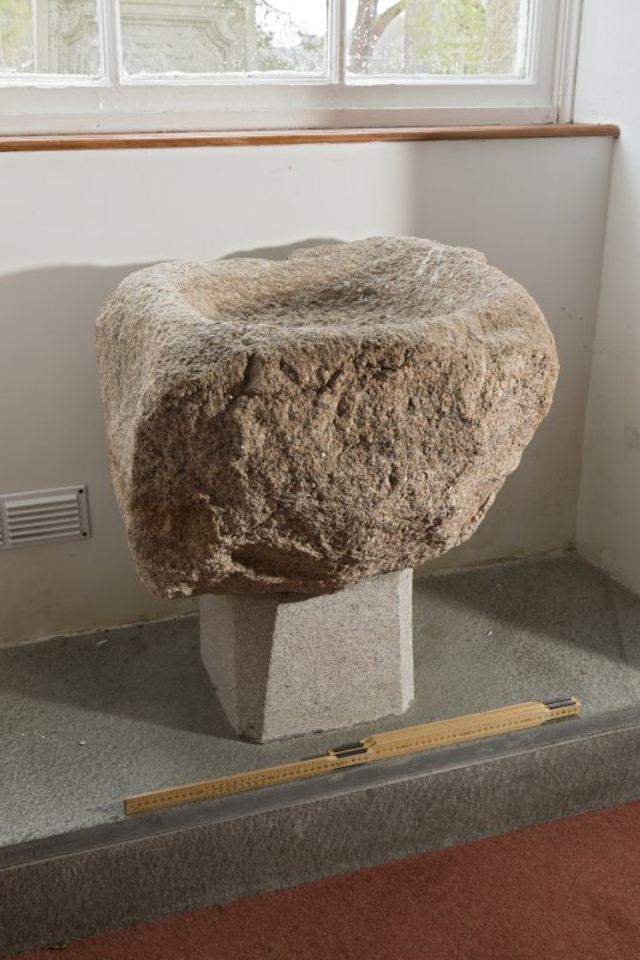
The settlement at the north end of Loch Insh, where a ferry once crossed the River Spey, was originally called Boat of Insh. When the railway came in 1863 the station (now closed) was named Boat of Insh but, in 1871, the railway company renamed it Kincraig and this was also when the bridge was built. The name of the village followed suite.
In more recent times the church has been given an etched-glass window in one of its gable-ends. This piece of work is very attractive and blends extremely well with the ancient history of the site. Its is the work of Helen Turner of the Edinburgh College of Art and its design is inspired by St. John's Cross on the Island of Hy (Iona) where Adamnán was, himself, abbot from 679-704AD.
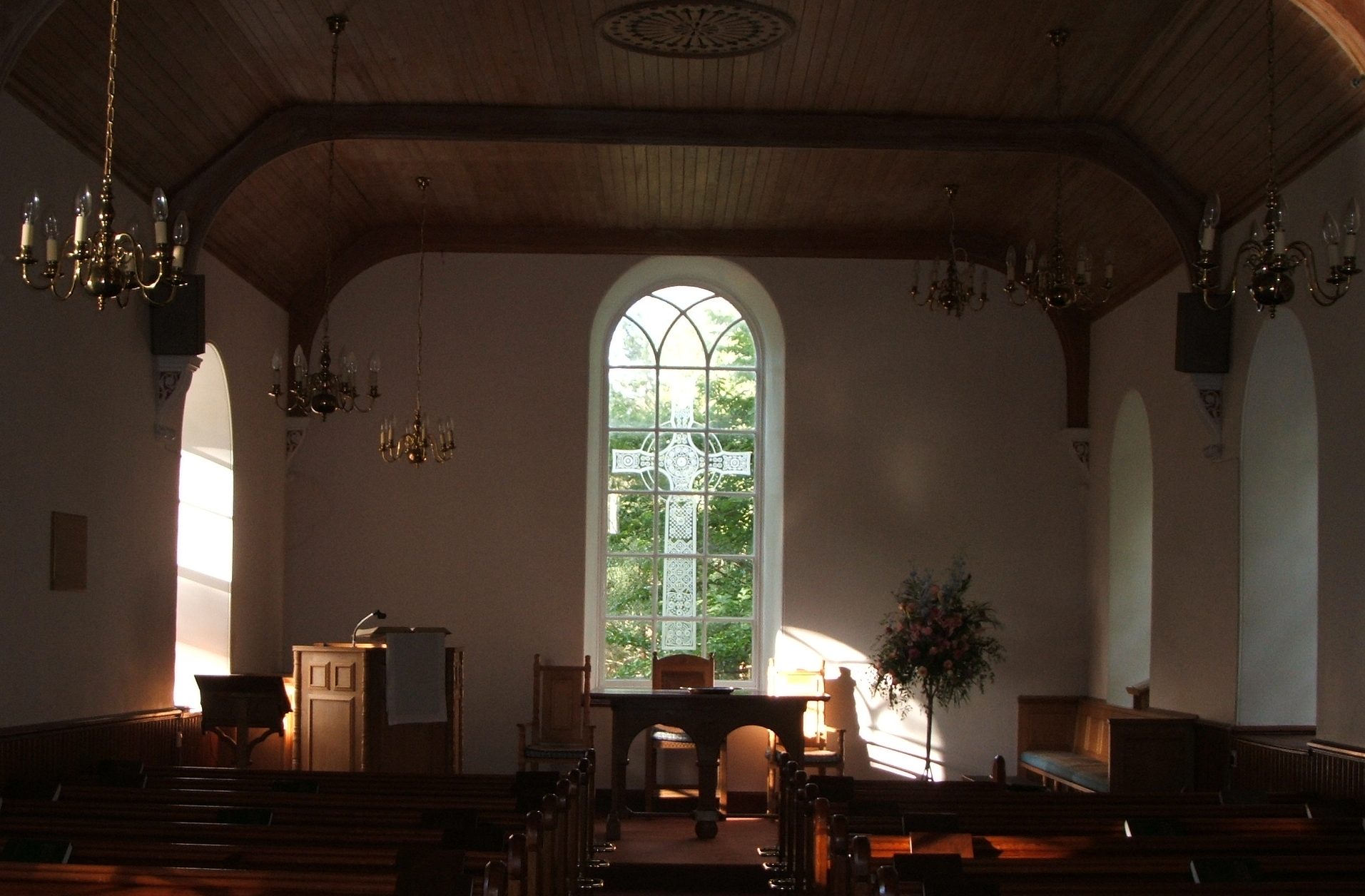
The Parish is bounded by the Feshie to the north and the Tromie to the south - both exceptionally attractive rivers. Although lying entirely on the south side of the River Spey, the parish stretches far back into the hills of western Glen Feshie and upper GlenTromie. Many of these lands have been held for generations by the Macpherson-Grant family. There are also close links with the MacPhersons of Invereshie.
Close by the church are the lands of Balnespick
Dr. William Reid noted the occurrence of a fair in the parish called Feil Columcille which may have been held annually on the Saint's 'anniversary' (9th June). He continued by quoting one of the late ministers of the Parish, a Rev. Mr. Munro, who had recounted to him that, "it was customary for the women to appear at this festival dressed in white, in token of their having been baptised; and that an old woman of the district died only a few years ago, aged ninety, who was wont to show off the white dress in which, in her young days, she attended this celebration, and which at last served her for a shroud."10.
A final story relating to the church is that the local people often referred to it as the Chapel of the Swans. It is recounted that the Loch of Insh was always a favourite stopping-point for flocks of mute swans at migration time. One ancient piece of folklore tells us that Adamnán himself used to go down to the shore of the loch and call the birds to him.
IT IS PERHAPS A SIGN OF THE TIMES BUT IT IS WITH THE DEEPEST SADNESS AND REGRET THAT WE HAVE RECENTLY LEARNED THAT THE CHURCH OF SCOTLAND IS TO PERMANENTLY CLOSE INSH CHURCH FOR WORSHIP IN THE VERY NEAR FUTURE - PERHAPS IN 2025. IT CAN ONLY BE HOPED THAT A SUITABLE USE WILL BE FOUND FOR THE BUILDING AND THAT IT WILL NOT BE ALLOWED TO LAPSE INTO RUIN. IT IS A MOST BEAUTIFULLY EVOCATIVE PLACE.
| No. | Name | Including | OS Grid Ref. | Extent | Notes |
|---|---|---|---|---|---|
| 1. | Ferlatter and Corranster | c. NH 830025 | 1 dabhach | ||
| 2. | Dell of Killhuntlee | NN 791988 | 1 dabhach | ||
| 3. | Ardynch | c. NH 81_01_ | 1 dabhach | Ardnish | |
| 4. | Invercessy | NH 842050 | 1 dabhach | Invereshie | |
| Corunlitate | |||||
| Corsaldstaill Moir | NH 831982 | ||||
| Inveruglash | NH 810005 | half dabhach | |||
| Clachan | |||||
| Dullichy | |||||
| Information from Ross (2003).90 Locations by David at Cushnie Enterprises. | |||||
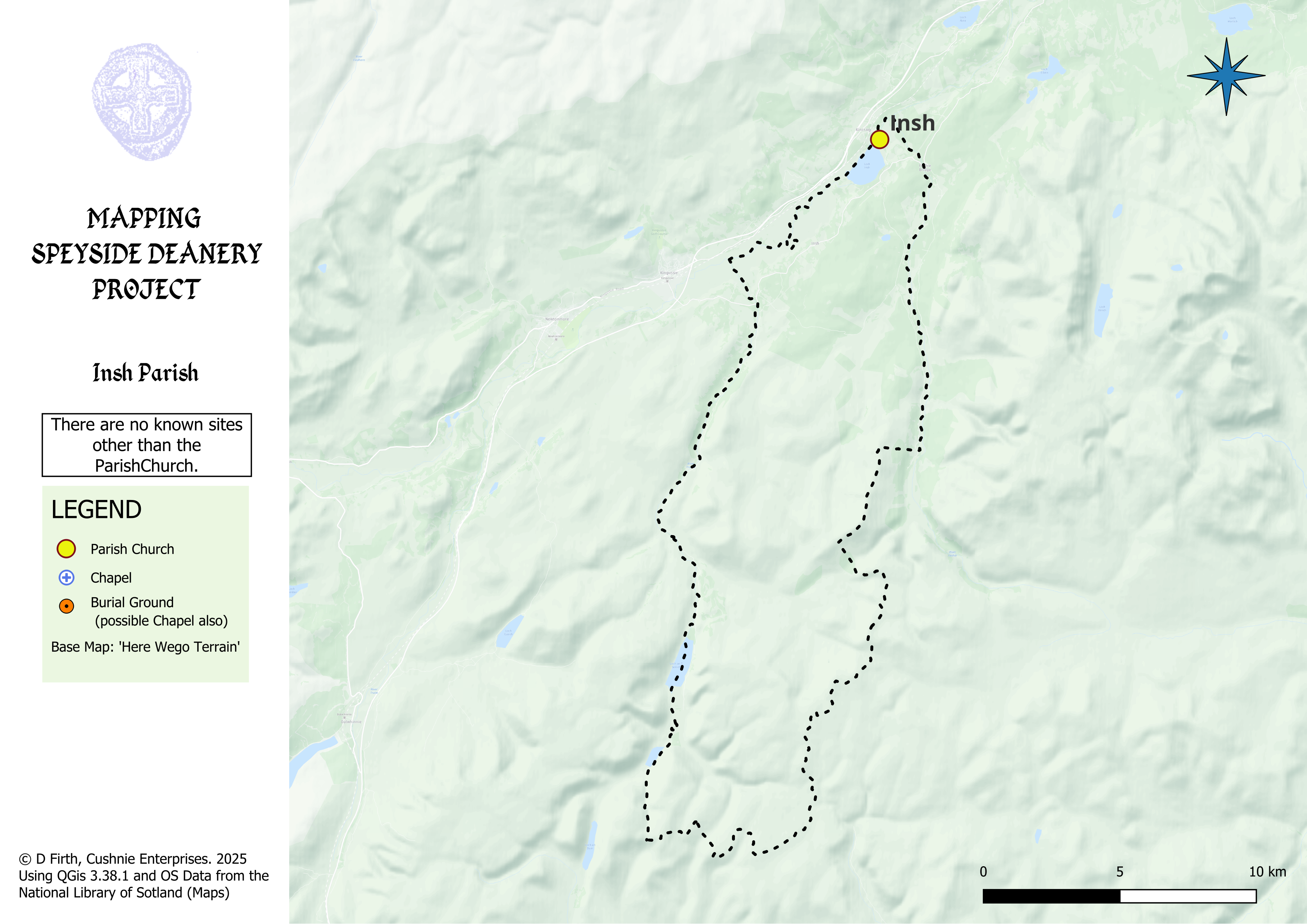
© Cushnie Enterprises 2025
1226 Bishop Andrew consistuted the prebend of Kingusy-Inche in his cathedral.20
1224-33 Bishop Andrew feus to William Comyn one dabhach from his two of Ardynch and Invercessy (Invereshie
(none recorded)
1. Crammond (1897), p.28. Return to Text
10. Reid (1883), p. 53. Return to Text
20. R.M.S., No. 68., p. 72. Return to Text
22. R.M.S., No. 76., p. 82. Return to Text
Anderson, G. and Anderson, P. (1842) Guide to the Highlands and Islands of Scotland Including Orkney and Zetland. Edinburgh. https://archive.org/details/guidetohighlands00andeiala
Barrow, G.S. (1988) 'Badenoch & Strathspey, 1130-1312', in Northern Scotland, Vol. 8.
Bliss, W.H. et al (1896) Calendar of entries in the Papal registers relating to Great Britain and Ireland: Petitions to the Pope, Volume I, A.D. 1342-1419, London: H.M. Stationery Office. [C.P.P., i.] https://archive.org/details/calendarentries00blisgoog
Chalmers, G. (1807) Caledonia or an Account, Historical and Topgraphic, of North Britain; from the most ancient to the present times: with a Dictionary of Places, Edinburgh: A. Constable. https://books.google.co.uk/books?id=_JiPwwEACAAJ&pg=PA115&source=gbs_toc_r&cad=2#v=onepage&q=Cromdale&f=false
Clancy, T.O. (1995) 'Annat in Scotland', Edinburgh: Innes Review, No. 46., Vol. 2., pp. 91-115.
Cramond, Wm. (1897) Guide to Grantown and District, Dundee: John Leng & Co..
Fawcett, R. and Oram, R. (2014) Elgin Cathedral and the Diocese of Moray, Edinburgh, Historic Scotland. Return to Text.
Forsyth, W. (1900) In the Shadow of Cairngorm: Chronicles of the united parishes of Abernethy and Kincardine, Inverness: The Northern Counties Publishing Company, Ltd. https://ia601605.us.archive.org/25/items/inshadowcairngo00forsgoog/inshadowcairngo00forsgoog.pdf
Fraser, Wm. (1883) The Chiefs of Grant, Edinburgh. Published by the Grant family in 3 volumes.
Fraser-Mackintosh of Drummond, C. (1866) Dunachton Past and Present, Inverness: Printed at the Advertiser Office. (Only fourty copies were printed.)https://archive.org/details/dunachtonpastpre1866mack
Innes, C. (1837) Registrum Episcopatus Moraviensis: e pluribus codicibus consarcinatum virca A.D. MCCCC, cum continuatione diplomatum recentiorum usque ad A.D. MDCVVIII, Edinburgh: for the Bannatyne Club. [R.E.M.]
MacDonald, A. (1973) '"Annat" in Scotland: A Provisional Review', Scottish Studies, 17 (1973), pp. 135-146.
Mackinlay, J.M. (1914) Ancient Church Dedications in Scotland: Volume 2, Non-Scriptural Dedications, Edinburgh: David Douglas.
Mitchell, J. & Noble, G. (2017) 'The Monumental Cemeteries of Northern Pictland', Medieval Archaeology, vol. 61:1, p. 1-40. http://dx.doi.org/10.1080/00766097.2017.1296031
Reid, W. (1895) Grantown and the Adjacent Country: A Guide to Strathspey, Grantown: Angus Stuart. (Third Edition, Revised).
Shaw, L., (1882) The History of the Province of Moray, Glasgow: Hamilton, Adams, & Co. New Edition in three volumes.
Theses.
Ross, A.D. (2003) The Province of Moray, c.1000-1230, unpublished PhD thesis presented to Aberdeen University, 2 volumes.
e-mail: admin@cushnieent.com
© 2024 Cushnie Enterprises
